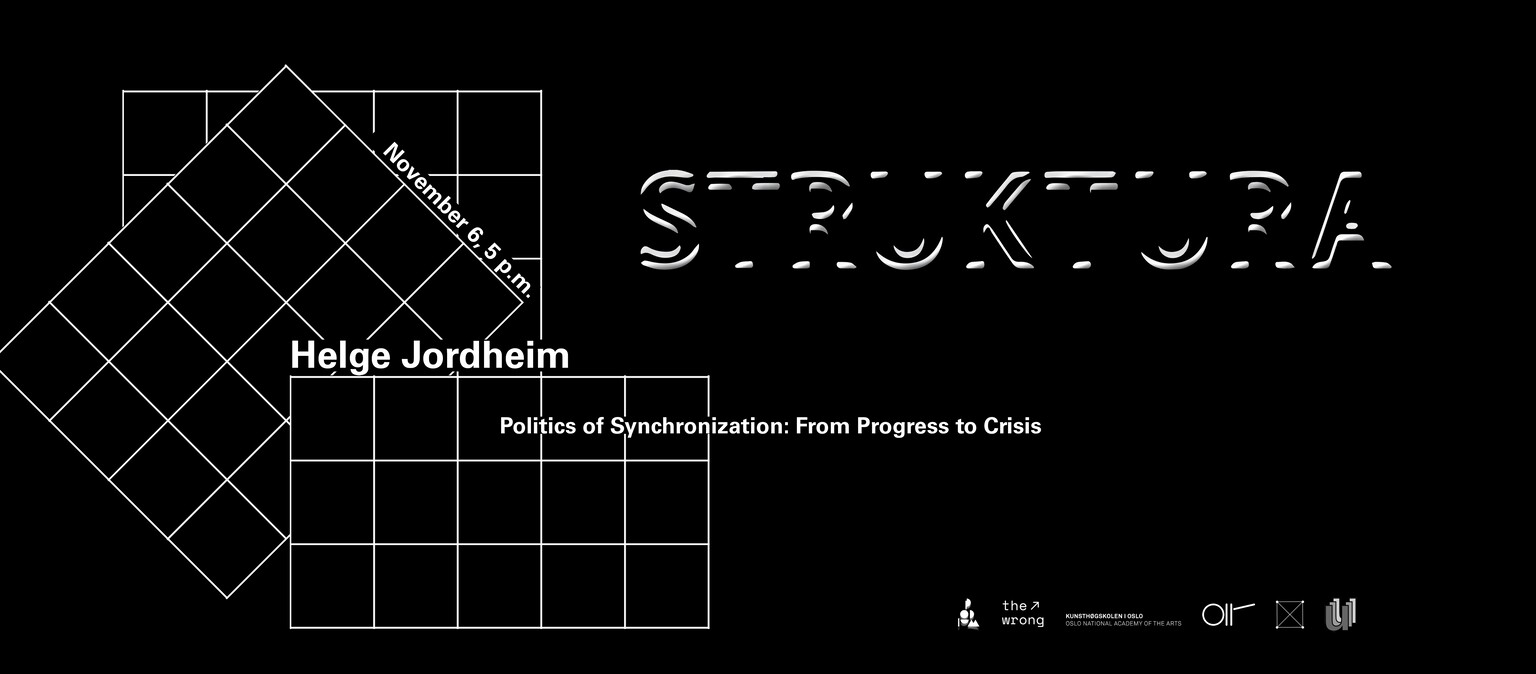Utstilling, Forelesning

Helge Jordheim: Politics of Synchronization, From Progress to Crisis
In societies homogenous, uniform, and stable time does not just exist or emerge; it is made, by means of what Helge Jordheim refers to as work or practices of synchronization.
Some work of synchronization is performed by technological innovations such as clocks, trains, telegraph lines, phones, satellites etc. Another set of tools, however, is linguistic, made up by concepts used to make historical and political time understandable and workable. Concepts are used to order events, objects and polities temporally, thus making both them and their temporality aspects of political order. By drawing together experiences, events, and meanings from different knowledge fields or cultures, they synchronize them, aligning their speeds, rhythms, and durations. One of the most central concepts that have been used in synchronization global societies over the past two centuries is progress. In his talk Jordheim maps out how progress has synchronized temporalities on a global scale and asks whether it is in the process of being replaced by another concept: the concept of crisis.
Helge Jordheim is Professor of Cultural History at University of Oslo. He has had visiting professorships at NYU, EHESS (Paris), and ZfL (Berlin), and he is currently Professor II for German Studies at NTNU (Trondheim). He has published widely on 18th century cultural and intellectual history, as well as German literature and conceptual history. He is currently heading the Toppforsk-project "Lifetimes: A Natural History of the Present" at UiO.
STRUKTURA is a cross-disciplinary initiative for research and practice within the framework of visual arts, media archeology, literature and philosophy. STRUKTURA is an exploration of how visual media and information technologies contribute to the ordering and production of time, where both past and future exist in a constantly malleable present. This five-month programme sprawls across virtual online environments and multiple physical venues in Oslo. It consists of exhibitions, film screenings, group readings, public event series and a club night.
STRUKTURA is an independent project supported by Podium, K4 Gallery, Oslo National Academy of the Arts, UNKNOW, Akademirommet at Kunstnernes Hus and The Wrong Biennale for Digital Culture. Design and web development by Magnus Andreas Hagen Olsen. Graphic design by Abirami Logendran.
Initiated and developed by Lesia Vasylchenko
